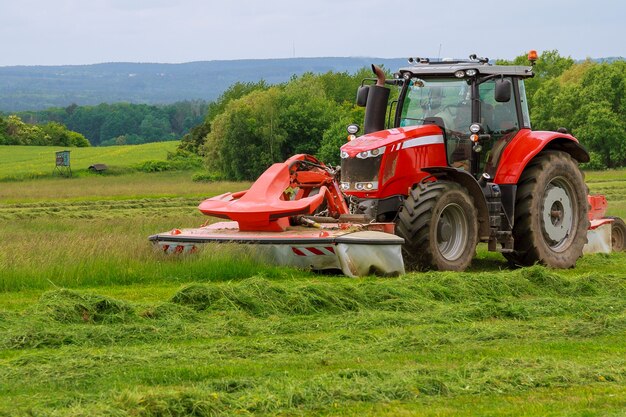Maintaining fields and pastures is crucial for agricultural productivity, livestock health, and aesthetic appeal. A mower is one of the most effective tools for ensuring proper upkeep. Here’s a step-by-step guide to using a mower for efficient field and pasture maintenance.
1. Choose the Right Mower
Selecting the correct type of mower depends on your field’s size and terrain. The common types of mowers include:
- Rotary Mowers: Ideal for cutting tall grass and weeds.
- Flail Mowers: Best for rough terrain and clearing thick vegetation.
- Sickle Bar Mowers: Great for maintaining hayfields and leaving a clean cut.
2. Inspect and Prepare the Mower
Before starting, inspect your mower to ensure it’s in good working condition:
- Check the Blades: Sharpen or replace dull blades to avoid uneven cuts.
- Inspect Belts and Bolts: Ensure all parts are securely fastened.
- Fuel and Oil Levels: Verify the fuel, oil, and hydraulic fluid levels to prevent breakdowns.
- Adjust the Cutting Height: Set the mower deck to the desired height based on the type of vegetation.
3. Plan the Mowing Schedule
Mowing regularly prevents overgrowth and maintains the health of your pasture. A typical schedule might include:
- Spring and Summer: Frequent mowing to control rapid grass growth.
- Autumn: Mow before the first frost to prepare the field for winter.
Avoid mowing during wet conditions, as this can damage both the mower and the field.
4. Mow Efficiently
Follow these tips for efficient mowing:
- Overlap Rows: Slightly overlap each pass to avoid leaving uncut strips.
- Maintain a Steady Speed: Too fast can lead to uneven cutting, while too slow wastes time.
- Mow in Patterns: For large fields, mow in a spiral or back-and-forth pattern to save time.
- Avoid Obstacles: Remove rocks, sticks, and other debris that could damage the mower.
5. Practice Safety
Always prioritize safety when operating a mower:
- Wear protective gear, including gloves and sturdy boots.
- Ensure bystanders and animals are clear of the mowing area.
- Use the appropriate tractor settings, especially on slopes, to prevent accidents.
6. Post-Mowing Care
After mowing, perform these maintenance steps:
- Clean the mower to remove grass clippings and debris.
- Inspect for any damage or wear on parts.
- Store the mower in a dry, sheltered area to prolong its lifespan.
7. Evaluate the Field
After mowing, assess the field to ensure the desired results. Check for:
- Uniform cuts across the area.
- Improved grass health and growth patterns.
- Reduced weeds and overgrown vegetation.
Benefits of Regular Mowing
Using a mower for consistent field and pasture maintenance provides several advantages:
- Promotes even grass growth, ensuring better grazing for livestock.
- Reduces the risk of pest infestations and weeds.
- Enhances soil health by allowing sunlight and air to reach the ground.
Using a mower effectively for field and pasture maintenance requires proper planning, the right equipment, and regular upkeep. By following the tips outlined above, you can ensure healthy, well-maintained fields that benefit your agricultural operations or livestock.
Join 'Farmers Mag' WhatsApp Channel
Get the latest Farming news and tips delivered straight to your WhatsApp
CLICK HERE TO JOIN






